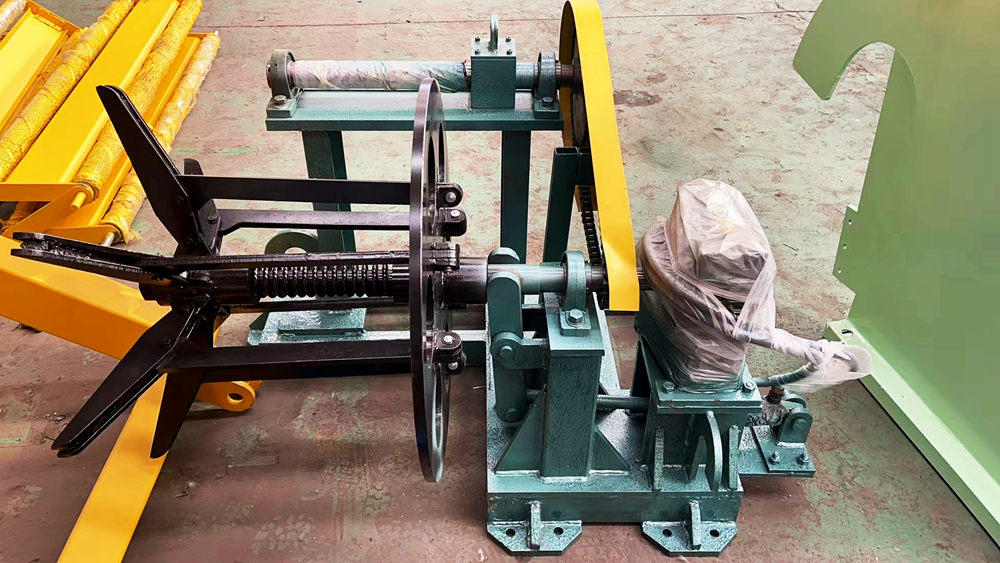
Color Steel Rain Pipe Roll Forming Machine A Comprehensive Overview
In the realm of modern construction and architectural design, material innovation plays a critical role in enhancing both functionality and aesthetics. One such innovation is the color steel rain pipe roll forming machine, a specialized piece of equipment designed for producing high-quality rainwater drainage systems. This article explores the significance, functionality, and benefits of this advanced machinery in the construction industry.
Understanding Roll Forming Technology
Roll forming is a continuous bending operation in which a long strip of metal, often coiled steel, is passed through a series of rollers to create specific shapes and profiles. The process is integral to the production of various metal products, including rain pipes, which are essential for effective drainage solutions in buildings and structures. The color steel rain pipe roll forming machine automates this process, ensuring precision and consistency in the manufacturing of rain pipes.
The Role of Color Steel in Construction
Color steel, often coated with a layer of zinc or polyester paint, is prized in construction for its durability, corrosion resistance, and aesthetic appeal. It comes in a variety of colors, allowing architects and builders to choose finishes that complement their designs while maintaining functionality. The use of color steel rain pipes not only enhances the visual aspect of buildings but also contributes to the overall sustainability of the construction by ensuring long-lasting performance in harsh weather conditions.
How the Color Steel Rain Pipe Roll Forming Machine Works
The operation of a color steel rain pipe roll forming machine typically begins with feeding a coil of color-coated steel into the machine. The coil is unwound and fed through a series of precision rollers that gradually shape the metal into the desired profile. Depending on the machine's design, these rollers can be adjusted to create various rain pipe sizes and designs, accommodating different project requirements.
Once the pipe is formed, it is often cut to the required lengths using automated cutting systems, ensuring efficiency and reducing waste. Many modern roll forming machines are equipped with computer numerical control (CNC) technology, allowing for high levels of precision and repeatability. This digital control also facilitates quick adjustments for different product specifications, making the manufacturing process highly versatile.

Benefits of Using Color Steel Rain Pipe Roll Forming Machines
1. Efficiency and Speed The automated nature of roll forming machines significantly speeds up production times compared to traditional methods. High output rates are achievable, making them ideal for large-scale construction projects that demand timely delivery of materials.
2. Cost-Effectiveness Although the initial investment in a roll forming machine may be substantial, the long-term savings in labor costs, minimized material waste, and increased production capabilities make it a cost-effective solution for manufacturers.
3. Consistent Quality The precision offered by roll forming technology ensures uniformity in product dimensions and features, translating to consistent quality across all manufactured pipes. This reliability is critical in construction, where any discrepancies can lead to performance issues.
4. Customization Capabilities Roll forming machines can be designed to produce a wide range of profiles and sizes. This adaptability allows manufacturers to respond dynamically to market demands, producing customized rain pipes that fit unique architectural designs.
5. Sustainability By producing durable and recyclable color steel products, the roll forming industry contributes to sustainable construction practices. The longevity of color-coated steel reduces the need for frequent replacements, thus conserving resources.
Conclusion
The color steel rain pipe roll forming machine is a pivotal innovation in the construction industry, marrying efficiency with quality to meet the growing demands of modern architecture. By providing durable, aesthetically pleasing, and consistent products, this machinery not only enhances the functionality of drainage systems but also supports the broader goals of sustainable building practices. As the construction landscape continues to evolve, the importance of such advanced manufacturing solutions will only increase, paving the way for smarter and more resilient structures.